Identity the following compounds :
a. 
b. C5H12O2Chiral (C) Na+MeI−−−−−→ C6H14O2Aχral (D)
c.  d. C6H14O(Anether) (G) ExcessHI−−−−−→ Single alkyl iodide (HI)
d. C6H14O(Anether) (G) ExcessHI−−−−−→ Single alkyl iodide (HI)
e. Saturated ether with fewest C atom atoms (I) that cannot be prepared by Williamson's synthesis.
f. Unsaturated ether with fewest C atoms (II) that cannot be prepared by Williamson's synthesis.
a. One DU in (A) and unreactivity with cold alk. KMnO4 (Baeyer's reagent) suggest (A) to be a ring compound. (A) is optically active, suggesting a ttrans epoxide.
 or
or 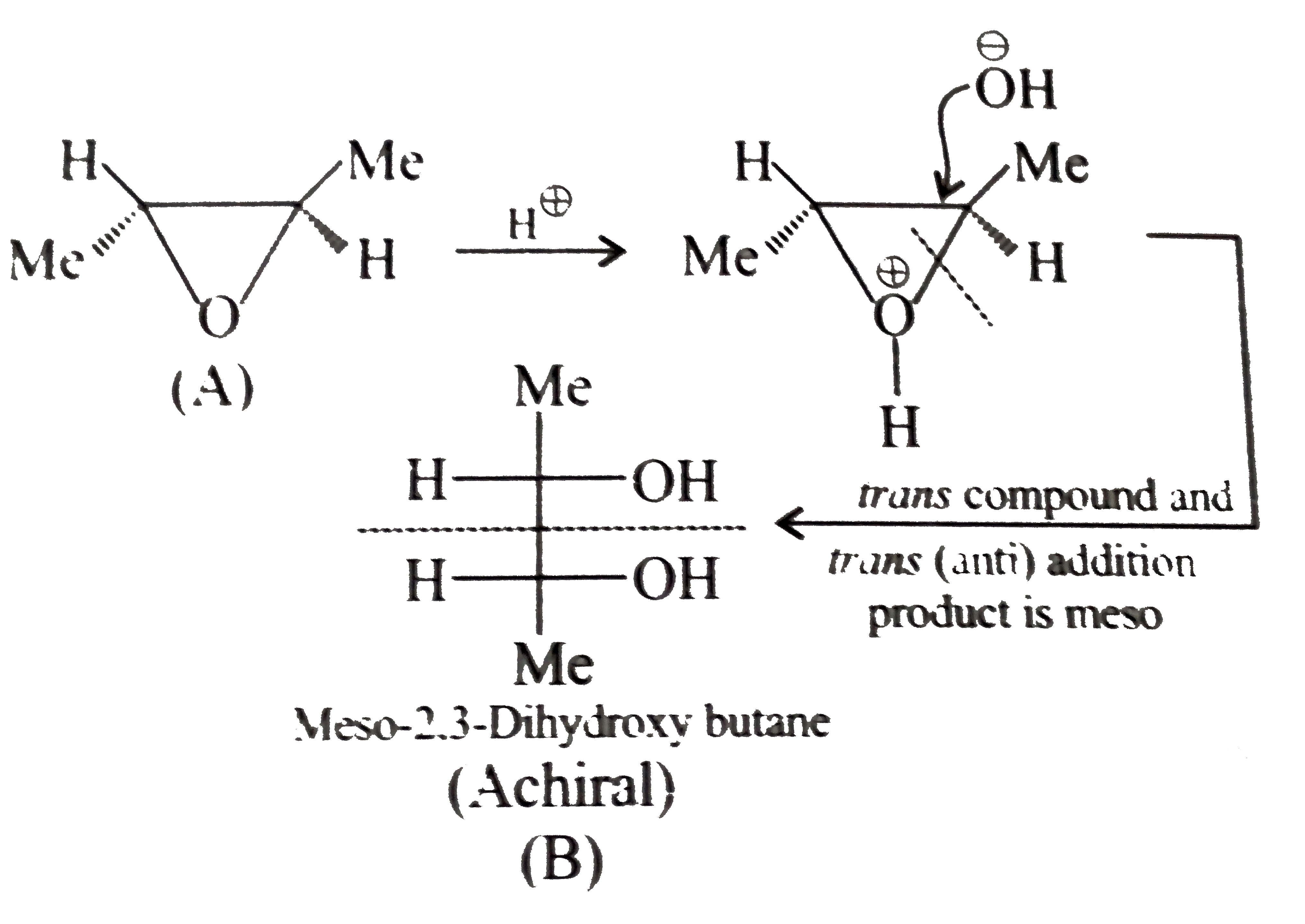
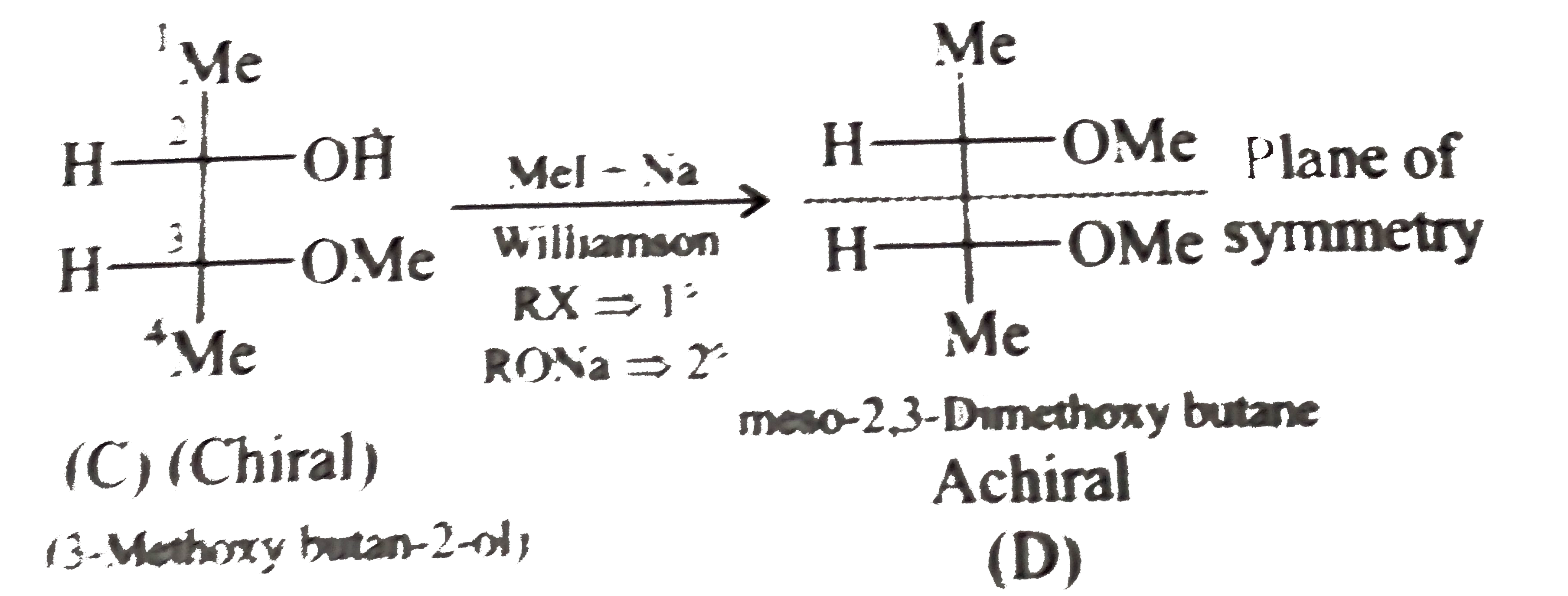
b. Zero DU in (C) and (D) suggests that both are saturated compounds, (C) can be either diol or containinh one (OH) and one (OMe) group since only one mole of MeI reacts with (C) (five C atoms) to give (D) (six C atoms). Compounds (C) contains one (OH) and one (OMe) given at adjacent positions to make (C) chiral.
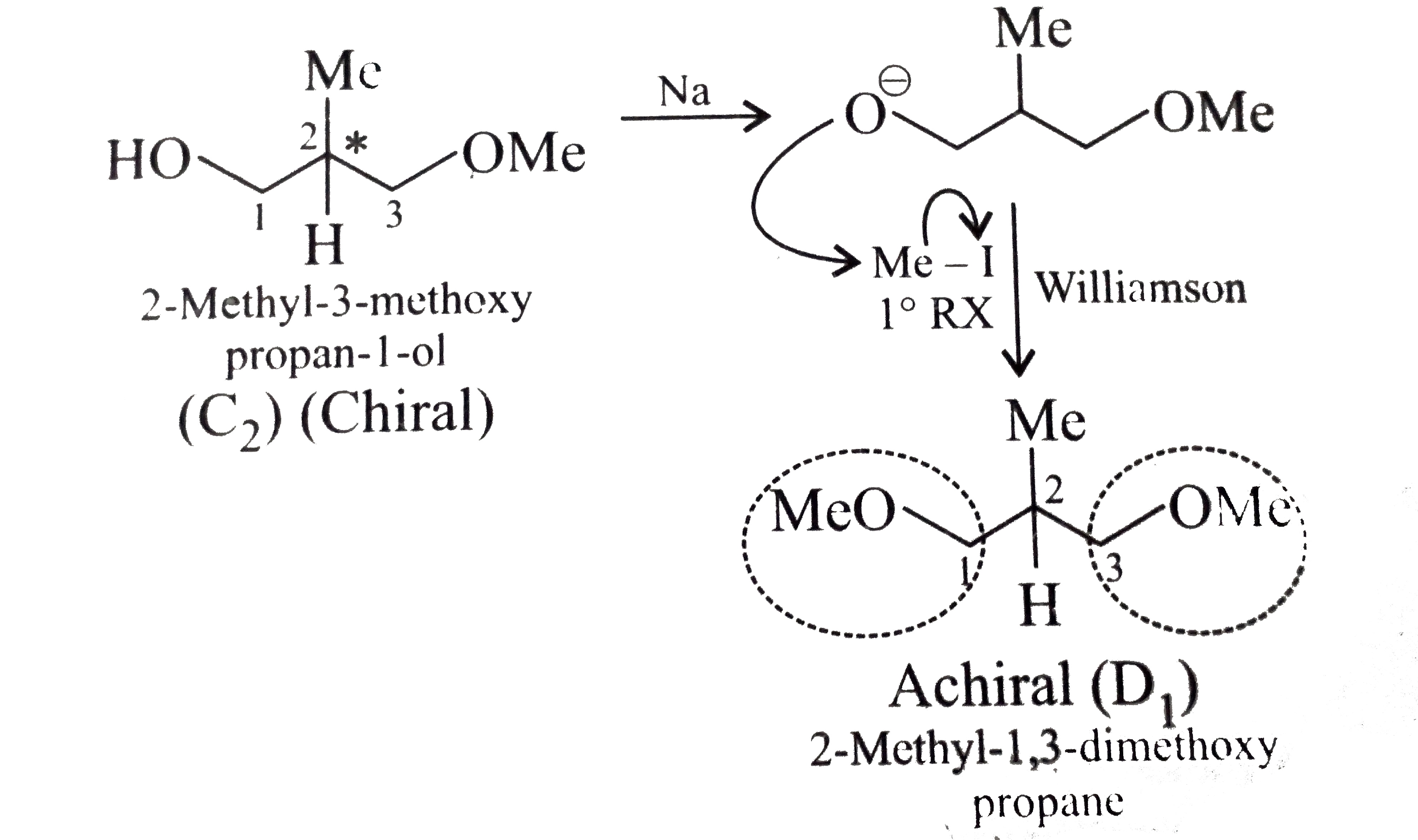
Another possiblity is:

c. i. Zero DU in (E) and 1 DU in (F). Here, (F) cannot be an alkene because it is inert to KMnO4 . It must be a cyclic be a cyclic ether. THP (tetrahlydropyran 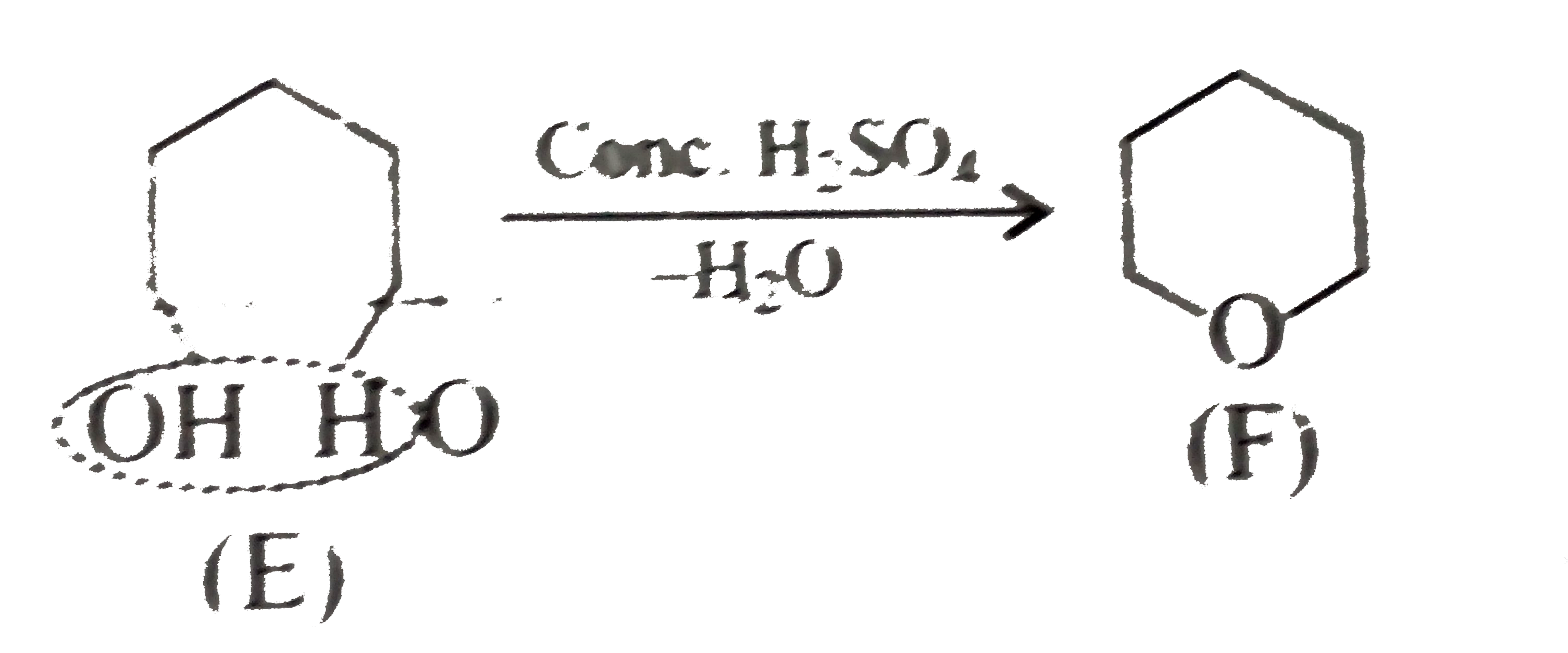 ) therefore (E) must be pentan 1,5-diol.
) therefore (E) must be pentan 1,5-diol.

ii. (E) cannot be
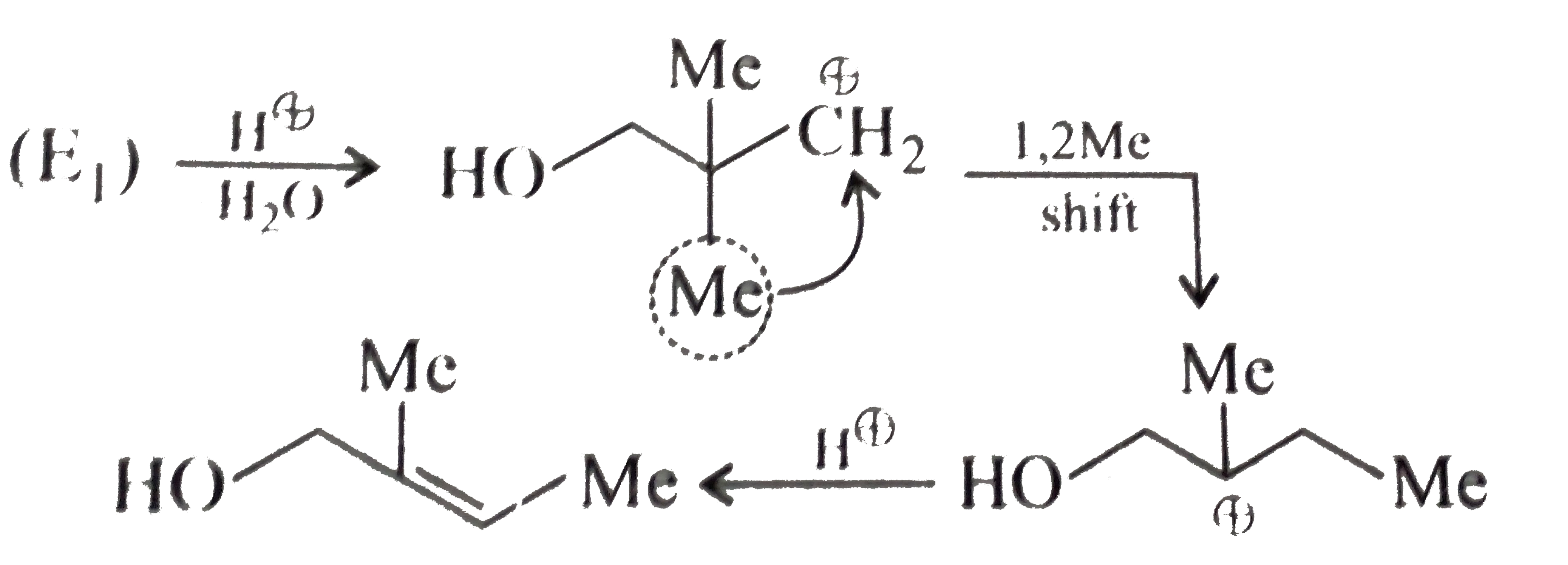 or
or 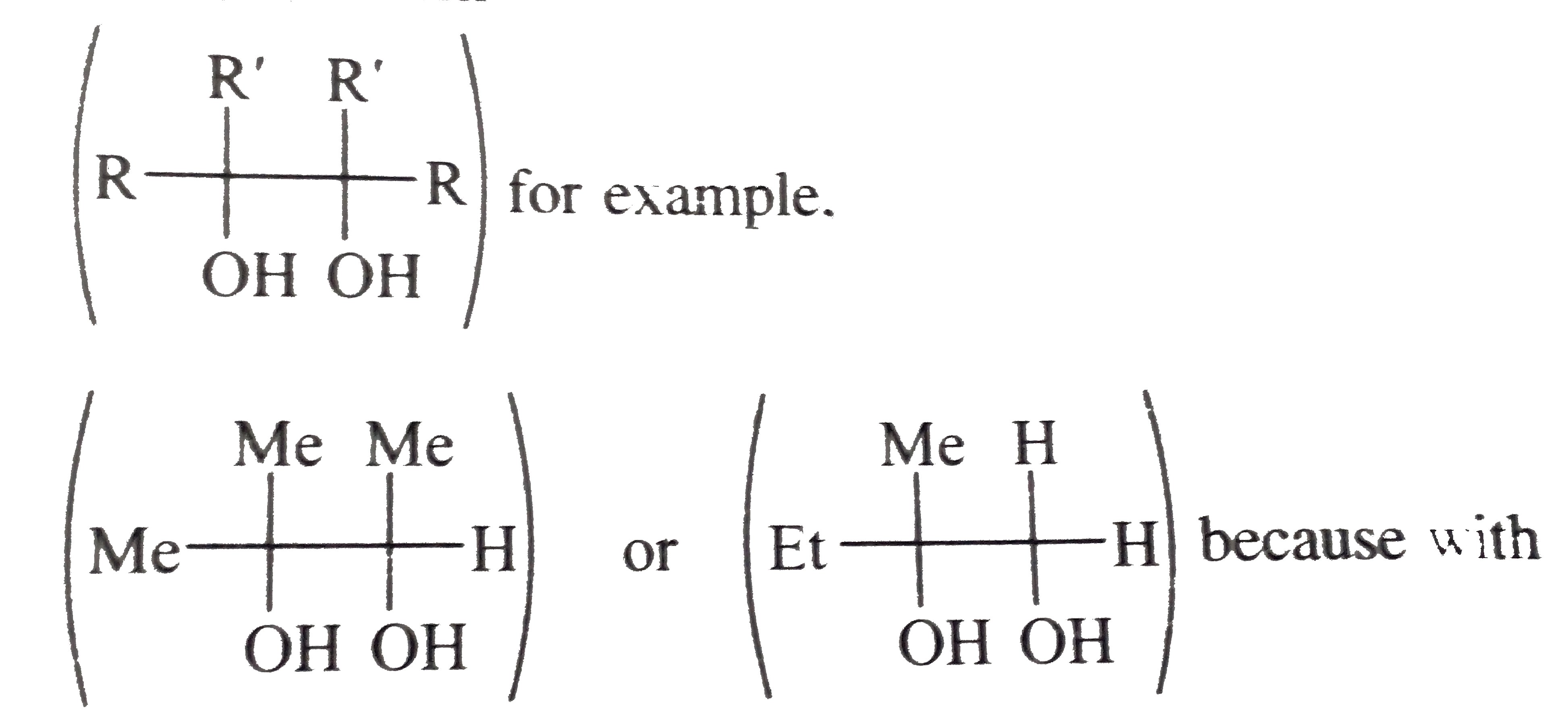
because (E1) on reaction with conc. H2SO4 would give alkene and (E2) is chiral.

iii. (E) cannot be vicinal diol of the type for example or because with
an acide they would undergo pinacol-pinacolone rearrangement reaction to give ketone which would undergo oxidation with KMnO4 .
d. (G) must be a symmetrical ether since on reaction with excess of HI, it gives single RI (G), di-n-propyl ether, or di-isopropyl ether.
e. Williamson's synthesis cannot be carried out in the following six types.
i. Both C atoms are 2∘ R2CH−−O−−CHR2
ii. One C is 2∘ and one is 3∘ R2CH−−O−−CR3
iii. Both C atoms are 3∘ R3C−−O−−CR3
iv. Both aryl groups Ar−−O−−Ar
v. Both vinyl groups H2C=CH−−O−−CH=CH2
vi. Both neopntyl groups

Satured ether (I) with fewest C atom is (Me2CH−−O−−CHMe2) (Di-isopropyl ether).
f. Unsaturated ether (II) with fewest C atoms is divinyl ether (H2C=CH−−O−−CH=CH2).
Topper's Solved these Questions
- ALCOHOL,PHENOL AND ETHERSBOOK - CENGAGE CHEMISTRYCHAPTER - ALCOHOL,PHENOL AND ETHERSEXERCISE - Exercises Subjective
25 Videos
- ALCOHOL,PHENOL AND ETHERSBOOK - CENGAGE CHEMISTRYCHAPTER - ALCOHOL,PHENOL AND ETHERSEXERCISE - Exercises Concept Application
33 Videos
- ALCOHOL,PHENOL AND ETHERSBOOK - CENGAGE CHEMISTRYCHAPTER - ALCOHOL,PHENOL AND ETHERSEXERCISE - Archives Analytical And Descriptive
15 Videos
- ALIPHATIC AND AROMATIC ALDEHYDES AND KETONESBOOK - CENGAGE CHEMISTRYCHAPTER - ALIPHATIC AND AROMATIC ALDEHYDES AND KETONESEXERCISE - Archives Subjective
29 Videos
Similar Questions
Identity the following compounds :
Saturated ether with fewest C atom atoms (I) that cannot be prepared by Williamson's synthesis.
Unsaturated ether with fewest C atoms (II) that cannot be prepared by Williamson's synthesis.
View Solutioncomplete the following reactions:
a. C6H6+MeCOCIBenze≠(A) AICI3−−−→ B HNO3––––––H(2)SO4)→ C NaBH4−−−−→ D H2SO4−−−→Δ E
View Solution
Knowledge Check
C6H5NH2Na2Cr2O7−−−−−→H+?
AC6H5CHOB C
C DNone
DNoneIdentify C in the following reaction sequence.
C2H5−OHAl2O3−−−→350∘CAHBr−−→BNa/ether−−−−−→AEthaneBEtheneCn-ButaneD1-ButeneIn the following sequence of reaction, the product C is
CH3−BrKCN−−→AH2O+−−−→BLiAlH4−−−→EtherCAacetoneBmethaneCacetaldehydeDethyl alcohol
C6H10NBS−−→(X)Mgether−−−−→(Y)CH3CN−−−−→H3O+(Z)
The compound (Z) is
View SolutionComplete the following reaction :
(a)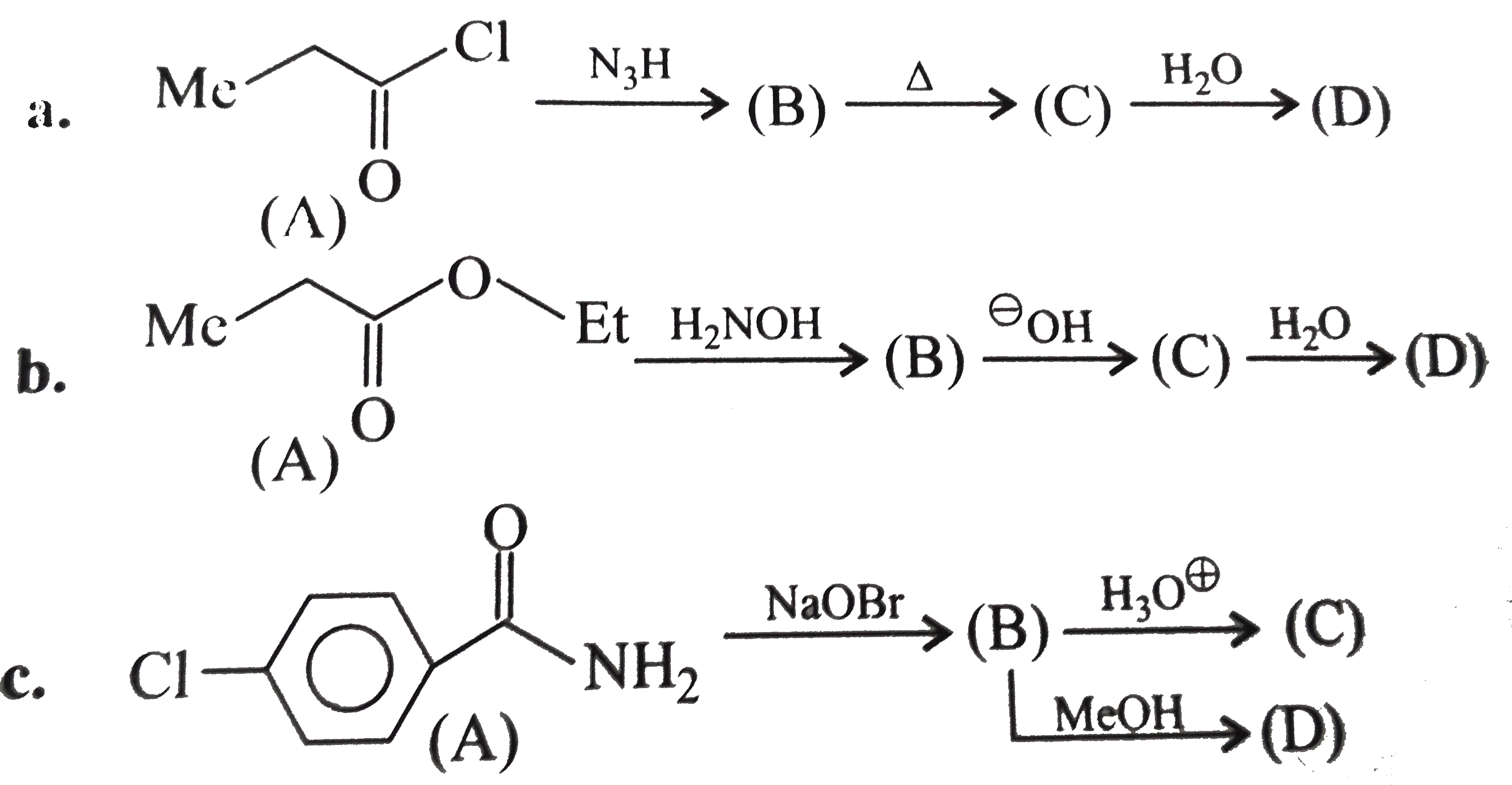
(b)
( c)
(d)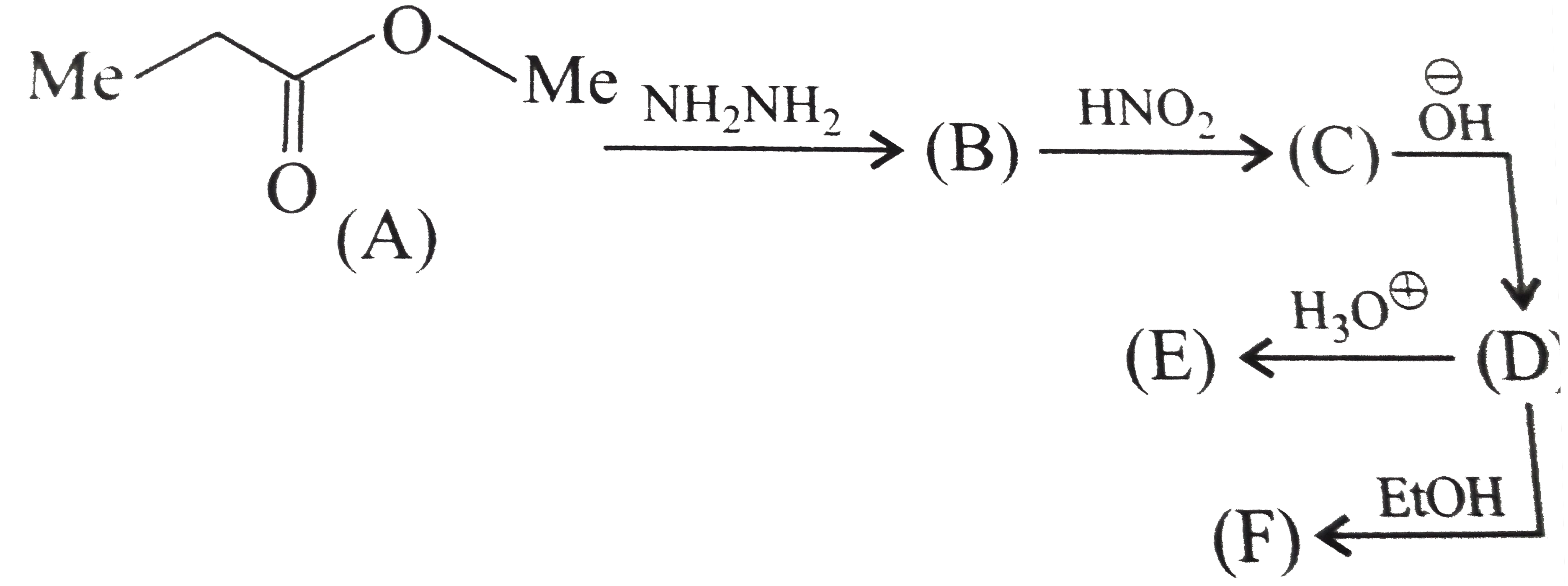
( e)
(f) PhCHON3H/H⊕−−−−−→Δ(B)H3O⊕−−−→(C)+(D)
(g)
View SolutionIn the following sequence of reaction, the product C is
CH3−BrKCN−−→AH2O+−−−→BLiAlH4−−−→EtherC
View SolutionProducts B and C in the following reaction are
CH3−C∣ClH−CH3∣CH−CH3KOH(alc.)−−−−−−−→A(i)O3−−−−−−−−−−→(ii)H2O/ZnB+C
View SolutionPh−O||C14−CHN2Ag2O−−−−−→H2O(A), product (A) is :
View Solution
